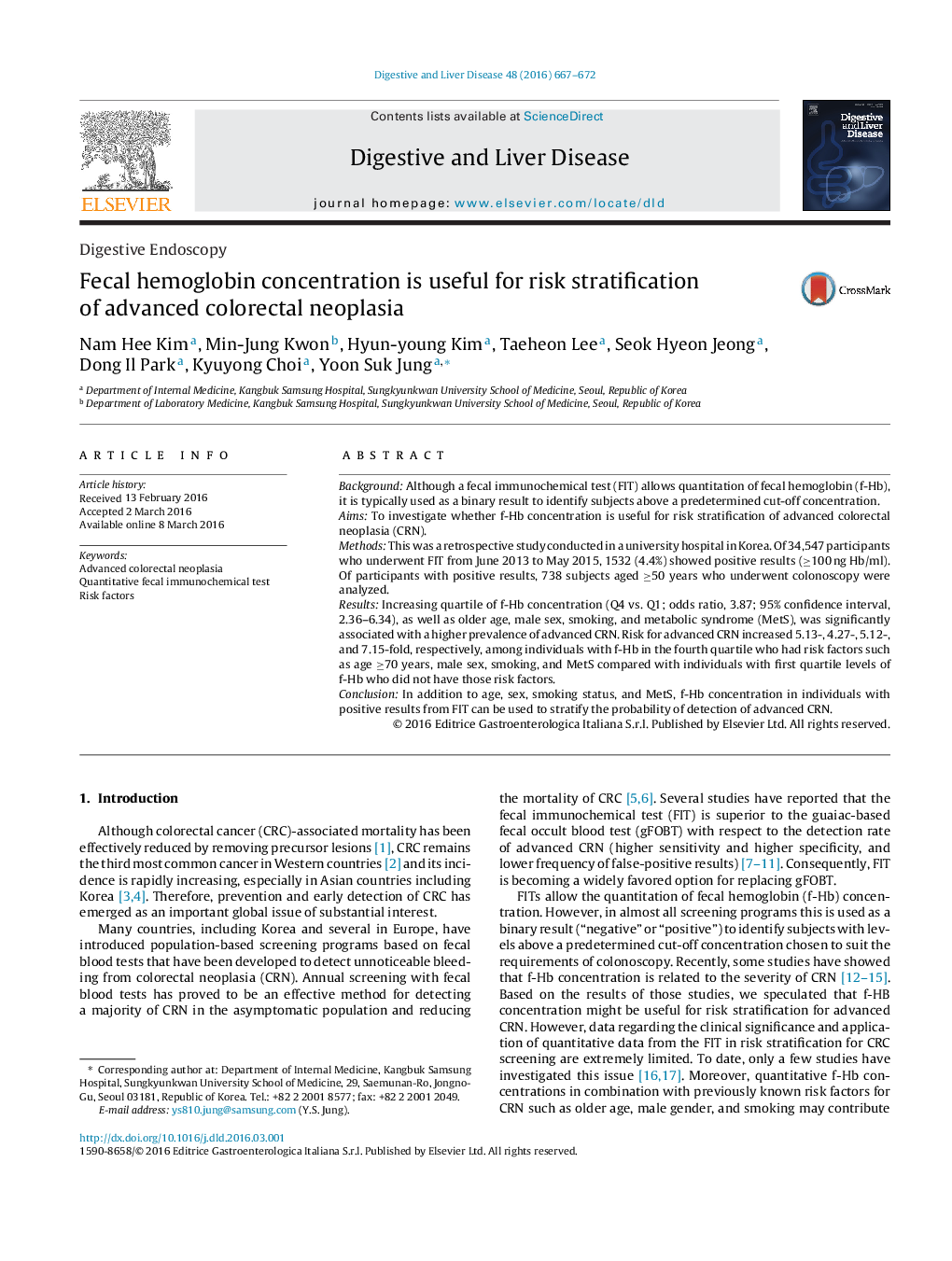| Article ID | Journal | Published Year | Pages | File Type |
|---|---|---|---|---|
| 6088133 | Digestive and Liver Disease | 2016 | 6 Pages |
BackgroundAlthough a fecal immunochemical test (FIT) allows quantitation of fecal hemoglobin (f-Hb), it is typically used as a binary result to identify subjects above a predetermined cut-off concentration.AimsTo investigate whether f-Hb concentration is useful for risk stratification of advanced colorectal neoplasia (CRN).MethodsThis was a retrospective study conducted in a university hospital in Korea. Of 34,547 participants who underwent FIT from June 2013 to May 2015, 1532 (4.4%) showed positive results (â¥100 ng Hb/ml). Of participants with positive results, 738 subjects aged â¥50 years who underwent colonoscopy were analyzed.ResultsIncreasing quartile of f-Hb concentration (Q4 vs. Q1; odds ratio, 3.87; 95% confidence interval, 2.36-6.34), as well as older age, male sex, smoking, and metabolic syndrome (MetS), was significantly associated with a higher prevalence of advanced CRN. Risk for advanced CRN increased 5.13-, 4.27-, 5.12-, and 7.15-fold, respectively, among individuals with f-Hb in the fourth quartile who had risk factors such as age â¥70 years, male sex, smoking, and MetS compared with individuals with first quartile levels of f-Hb who did not have those risk factors.ConclusionIn addition to age, sex, smoking status, and MetS, f-Hb concentration in individuals with positive results from FIT can be used to stratify the probability of detection of advanced CRN.
